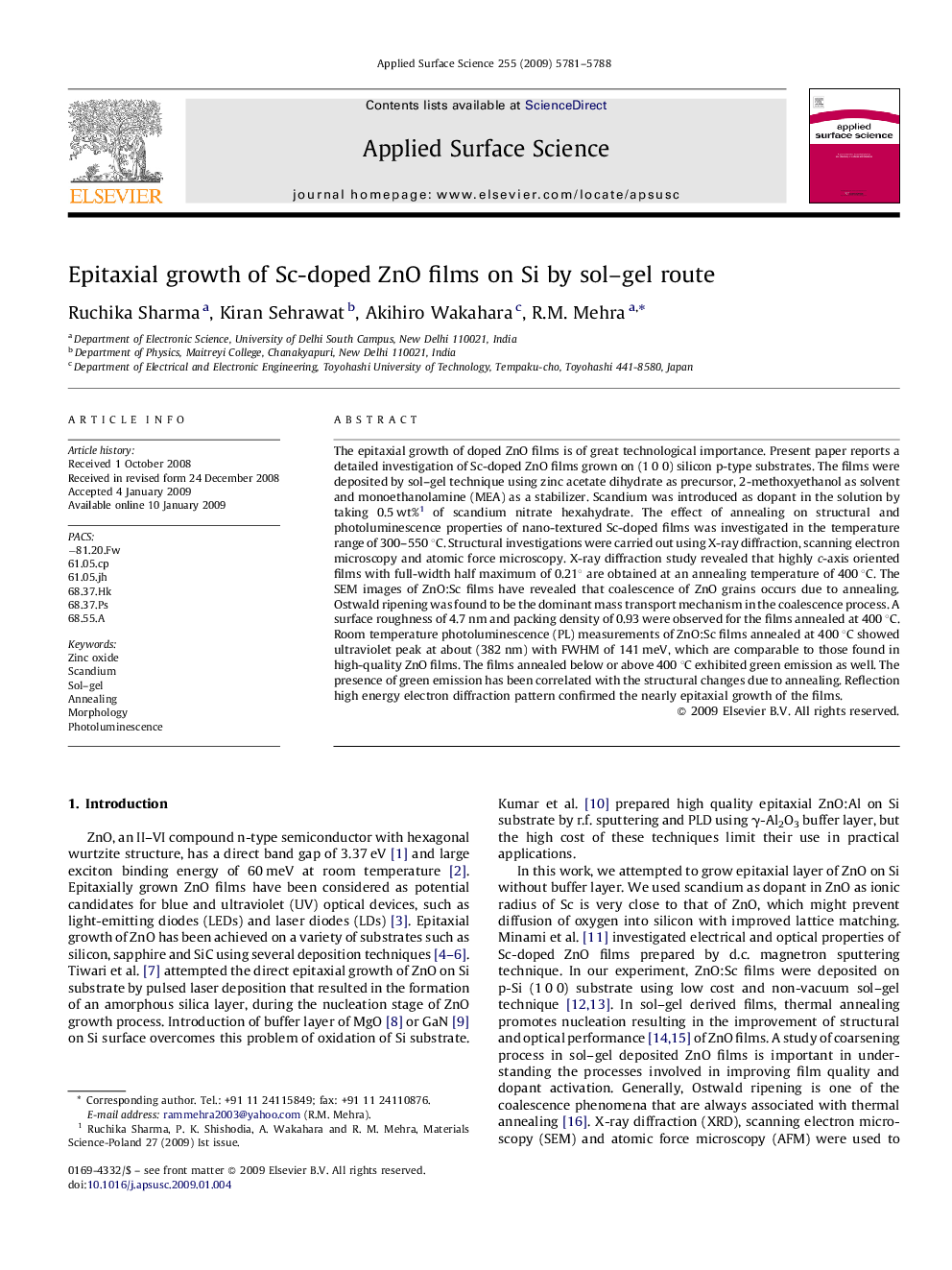| Article ID | Journal | Published Year | Pages | File Type |
|---|---|---|---|---|
| 5367275 | Applied Surface Science | 2009 | 8 Pages |
The epitaxial growth of doped ZnO films is of great technological importance. Present paper reports a detailed investigation of Sc-doped ZnO films grown on (1 0 0) silicon p-type substrates. The films were deposited by sol-gel technique using zinc acetate dihydrate as precursor, 2-methoxyethanol as solvent and monoethanolamine (MEA) as a stabilizer. Scandium was introduced as dopant in the solution by taking 0.5 wt%1 of scandium nitrate hexahydrate. The effect of annealing on structural and photoluminescence properties of nano-textured Sc-doped films was investigated in the temperature range of 300-550 °C. Structural investigations were carried out using X-ray diffraction, scanning electron microscopy and atomic force microscopy. X-ray diffraction study revealed that highly c-axis oriented films with full-width half maximum of 0.21° are obtained at an annealing temperature of 400 °C. The SEM images of ZnO:Sc films have revealed that coalescence of ZnO grains occurs due to annealing. Ostwald ripening was found to be the dominant mass transport mechanism in the coalescence process. A surface roughness of 4.7 nm and packing density of 0.93 were observed for the films annealed at 400 °C. Room temperature photoluminescence (PL) measurements of ZnO:Sc films annealed at 400 °C showed ultraviolet peak at about (382 nm) with FWHM of 141 meV, which are comparable to those found in high-quality ZnO films. The films annealed below or above 400 °C exhibited green emission as well. The presence of green emission has been correlated with the structural changes due to annealing. Reflection high energy electron diffraction pattern confirmed the nearly epitaxial growth of the films.
